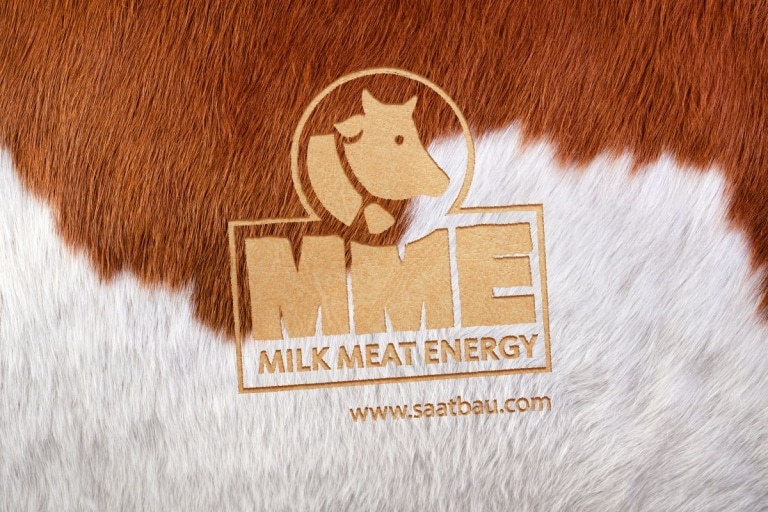MME
Milk, Meat and Energy
The new generation of silage maize for top performance.
MME (Milk-Meat-Energy) stands for new and improved silage maize varieties of SAATBAU LINZ, which have been specifically selected from the breeding programmes, taking into account the requirements of the Austrian silage maize operations.
For several years, the maize breeding station Schönering has carried out a specifically designed programme to select silage maize hybrids for the European markets. The result is a new generation of varieties, which sets new standards for silage suitability.
The new generation of silage maize constitutes a significant progress in several areas for Austrian cattle farming, both for meat and dairy production and is identified with the MME (Milk-Meat-Energy) label.

MME genetics deliver not only excellent yields but also optimised silage maize characteristics.
Early development
Fast early development and cold tolerance are trade marks of the flint maize genetics from Schönering. Many silage maize cultivation areas are not exactly ideal cultivation areas, so the robustness of the varieties is also an advantage for weed control.
Plant health
A healthy leaf mass ensures low infestation of the harvest with microorganisms and avoids problems when ensiling. Only a good stay-green ability and excellent plant health allow the grains to fully develop their starch content.
Lodging resistance
Extreme weather conditions have shown that, despite their extremely fast development, the massy MME silage maize varieties set standards regarding lodging. The result is an extraordinary lodging resistance combined with low lignification of the structural substances and an increased digestibility of the fibres.
Stay-green
For ensiling maize, it is essential that the plants stay green as long as possible. Assimilation until harvesting results in a high sugar content which enables quick ensiling. A long window for harvesting allows waiting out adverse weather situations.
Digestibility
For many years, SAATBAU LINZ has examined the digestibility of the fibres of its silage maize varieties. In addition to the commonly oberserved 48 hour time frame for examination, we also examine the NDF digestibility over 24 hours. This has proven more effective in bringing the differences of the selected genetics to light that significantly increase the value of the basic feed. MME-varieties must exhibit a 2% higher NDF digestibility than on average – which, in practice, means a world of difference!
Starch yield
All of our silage maize varieties labeled as MME-varieties are, of course, also tested for their grain maize performance and can deliver good starch yields per hectare. If the caloric density of such massy, tall varieties is to be increased, farmers can do so by adjusting the cutting height accordingly.
Rumen-undegradable starch
To be able to feed rations with a high maize portion, part of the starch from the grain should be rumen-undegradable. The hybrids of this new MME generation are mostly flint maize varieties and exhibit a slightly higher percentage of rumen-undegradable starch. This can help with ration composition, is more efficient as far as the caloric value is concerned and avoids having to replace basic feed through concentrate.
Dry matter yield
In recent years, the SAATBAU LINZ maize breeding station in Schönering has been recognised in several countries for the top yield performances of its new silage maize varieties. This has been confirmed time and time again by the official silage maize exams in a variety of countries certifying their broad environmental stability and stress tolerance.